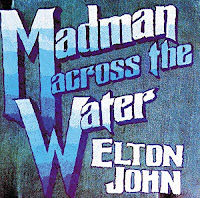In this episode - Why Buy Vinyl Albums . . .
Do you consider yourself a music lover? During my high school and college days (1970-1979), music was about what it took to recreate the concert experience. Pulse-pounding bass and drums, hypnotic electric guitar leads, remarkable rhythm, and distinctive vocals.
How, you ask? High-fidelity recordings could only be reproduced for consumers from vinyl LP record albums. And, of course, BIG speakers. (The first digital compact disc (CD) was released in 1982 in Japan). In my dorm at Western Illinois University, college was contesting who owned the "best" speakers and quality hi-fi amplifier. To name a few from that era, Pioneer, Sansui, Kenwood, Marantz, and Harman Kardon, among many others.
Another essential component was the turntable. Audio-Technica, Denon, Technics, Marantz, Onkyo, and Pioneer have made a big comeback in recent years.
I remember my roommates' "Rig," a Marantz 1070 amplifier, Technics turntable, and BIC Formula Four speakers. My tiny Pioneer integrated system didn't stand a chance.
However, the question remains, have you ever experienced music reproduction from a quality stereo system with a turntable and LP record?
You may be thinking, "Why bother? We have the convenience of modern digital devices that integrate with home, personal, and car audio systems?"
During a Saturday visit to our local record store - Standards in Vista, CA. I became giddy about a find. I dictated a text to Lori, "You'll never believe what album I found for six dollars."
With her iPhone in hand, which contains our entire music collection (BTW), her response, "I say, why buy albums?"
My first thought was, what, are you kidding? "An LP album is a multi-sensory experience." Allow me to rationalize.
While flipping through bins of "old" records, I discovered a used copy of Madman Across the Water by Elton John and Bernie Taupin. You've probably heard many of the hits; Tiny Dancer, Levon, and Madman Across the Water. Of course, we own a digital copy, one of my favorites not in my record collection from the 1970s.
As I opened the bi-fold album, I was surprised to find an intact original booklet of lyrics and photos included with the layered artwork—the cover replicated the authentic look and feel of blue jeans and had a familiar fragrant aroma.
At the height of record production, artists were hired to work with musicians to carefully craft masterful artwork that became the album cover, stunning 12 1/2 inch square pressed artwork, the liner notes, lyrics sheets, and sleeve design.
Today when you purchase (or should we say rent), a digital version included is a miniature of the album cover artwork on your phone; I'm sorry, that's just not the same.
My listening friends, the full sensory experience of a rich concert re-creation involves; slide the record from its sleeve, place it on the turntable, turn it on, check the playback speed, clean the disc, place the tonearm, and enjoy!
A rich, deep, resonant, full melodic bass sound fills the room: harmony, rhythm, and the perfect articulation of sound reproduction. So go ahead, live a little, turn up the volume, sit back, close your eyes, and relive that concert experience all over again.
Come on; you still need to ask, "Why buy an Album?"
I'm Patrick Ball; thanks for listening. See you in the next episode.

Comments